I’ve written about the Hornet before (and I’ll give you a link to that past blog at the end of this one). The point of today’s writeup? It’s about accuracy and a few different loads for the Hornet in my single-shot No. 3 Ruger. I like the idea of a single-shot rifle and I love the .22 Hornet cartridge. The .22 Hornet was the world’s first centerfire .22 cartridge, and in its day, it was a real hot rod. Velocities range between 2400 and 2900 feet per second (sometimes a little more, depending on the load). Recoil and muzzle blast are nearly nonexistent compared to other centerfire cartridges, and it’s a fun cartridge to shoot.
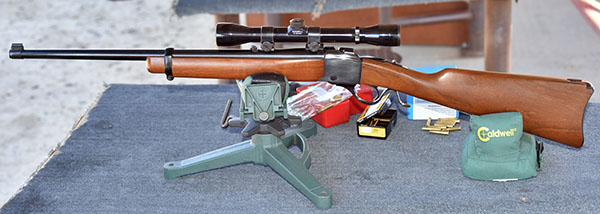
The idea for this blog started when I saw three boxes of Speer 33-grain hollow point bullets a couple a few weeks ago at my reloading supply depot. They were inexpensive (just $10 a box), so I bought all three. I hadn’t tried the light Speer bullets and I wanted to see how they compared to an old favorite, the 45-grain Sierra Hornet bullet. I also wanted to try a propellant that I had purchased previously (Lil Gun) and compare it to my favorite Hornet propellant (Winchester 296). And my good buddy Tom recently gave me a bunch of old .22 Hornet ammo that I shot up on a prior outing, so I had a good supply of Hornet brass. It all came together a week or two ago, and the result was a hundred rounds of reloaded .22 Hornet ammo in various load configurations.

The Ruger No. 3 was the low-alternative to the fancier Ruger No. 1 back in the day. The No. 1 had more figured walnut (in the 1970s, and maybe today, too), the No. 1 rifles with iron sights had fancier sights and a cool quarter rib, the No. 1 stock had a pistol grip and a rubber recoil pad, and the No. 1 had hand-cut checkering. The No. 3 was a simpler gun, with plain walnut, an aluminum (later plastic) buttplate, no checkering, and a less-fancy iron sight setup. In the 1970s, the No. 3 suggested retail price was $165, and you could buy them brand new all day long for $139. The No. 1 retail price was $265, and those could similarly be had for $239. Oh, how times have changed. New No. 1 Rugers sell for something like $1500 today, and Ruger stopped making the No. 3 altogether. It’s likely (in my opinion) that at some point in the not too distant future, Ruger will drop the No. 1, too. That’s okay; it will make mine more valuable. Not that I’m planning to sell anything. It just feels better knowing the value is going up.
Ruger manufactured the No .3 from 1973 to 1986. The very first one was chambered in .45 70 (a classic cartridge, to be sure), and then Ruger added two more classics: The .22 Hornet and the .30-40 Krag. Ruger built the rifle you see in this blog in 1978. Ruger No. 3 rifles can still be found on the used gun market, but these days they go for about the same price as a used No. 1, which is usually somewhere between $800 and $1000. Supply and demand, you know…they aren’t making any more No. 3 Rugers.
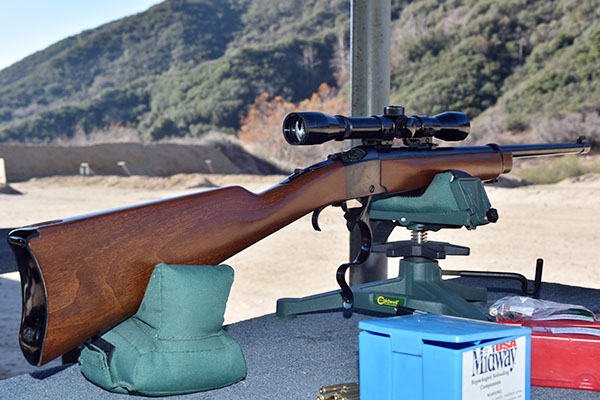
The Ruger’s action is called a falling block because, well, it is. When you open the trigger guard/lever, the breechblock drops (it’s the silver thing you see in front of the trigger in the photo above), and that allows inserting a round in the chamber.
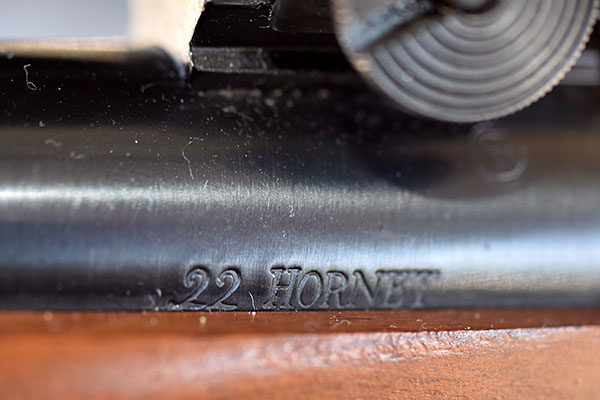
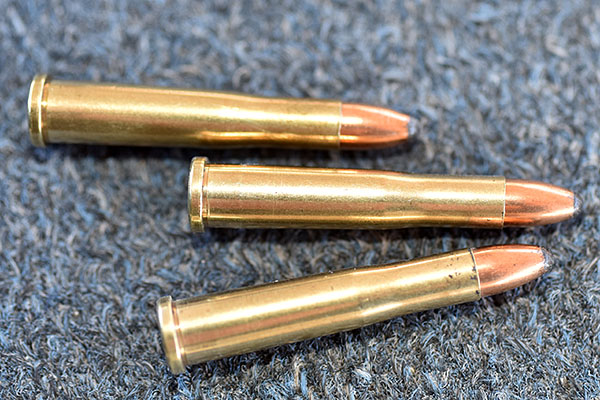
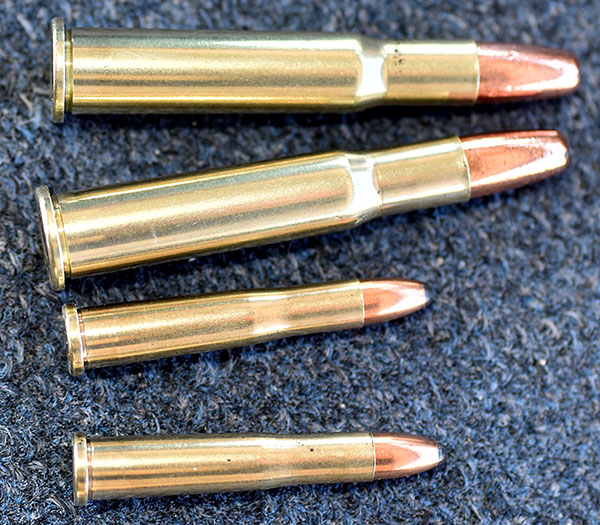
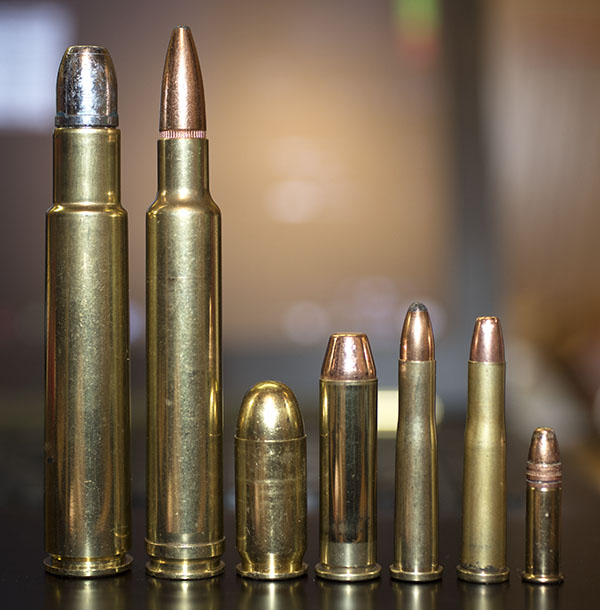
The Hornet is fun to shoot, but it’s one of those cartridges that is tricky to reload (a couple of others are .30 Carbine and 9mm; they are challenging to reload for other reasons). Hornet brass is very thin (so you can’t reload it too many times and it’s easy to deform it when seating the bullet). It’s hard to get the bullets started straight during the seating operation, and the whole reloading process just takes a lot more finesse than does reloading most other cartridges. Everything is tiny. That being said, though, I like reloading Hornet ammo, especially when good groups are the result.
So how did it go? Not bad, I think. Here are the results:

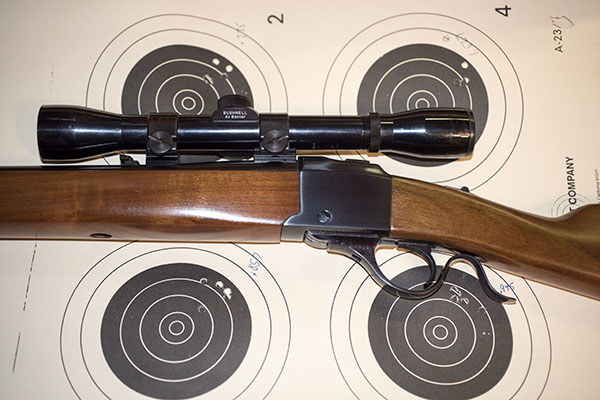
My testing wasn’t exhaustive, and I only shot at 50 yards on this outing. I tried a few new things with these tests. As mentioned above, the Lil Gun propellant and 33-grain Speer bullets were two of the variables, and both did well. I’d previously read that some shooters had better results using small pistol primers instead of small rifle primers, so tried that and it seems to be the case for me, too. The theory is that small rifle primers, combined with the Hornet’s small case capacity, may blow the bullet out of the case before the powder can get a good burn going. I don’t know if that’s the case or not, but the small pistol primers worked well for me.
The next steps for me will be to shoot these loads at 100 yards to see how the rifle does at that range. The scope on my rifle is an inexpensive Bushnell straight 4X and it’s quite a bit more clear at 100 yards (it’s just a little bit out of focus at 50 yards). We’ll see how that goes, and I’ll publish the results here. Stay tuned, my friends.
You can read more Tales of the Gun stories here!

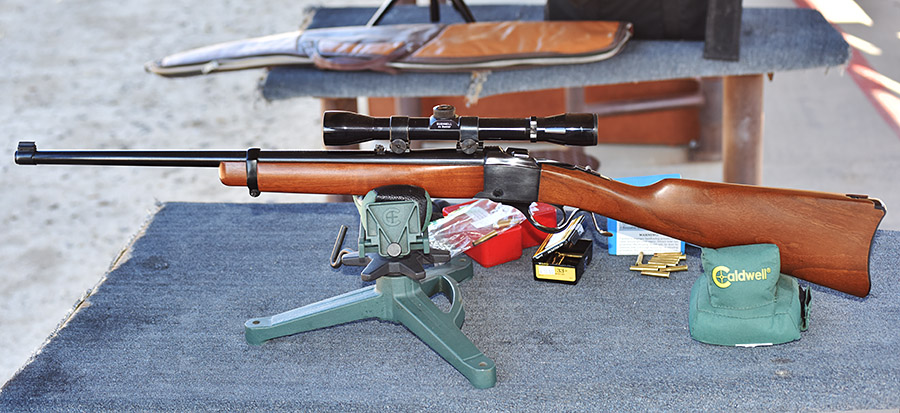
I notice the “22 Hornet” stamping seems fairly even depth wise. Are the letter punches curved to match the radius of the barrel or do the roll the barrel into the stamps?
Joe, I think the part to be marked is held stationary, and the letters to be marked into the part are on a roller. I’m not certain that Ruger does it that way, but I would guess that they do. Here’s a video that shows the process for another manufacturer:
Roll Marking Gun Parts
Interesting. Thanks for the comparison photo’s.
You bet, Tom. As you might imagine, the .300 Weatherby and the .416 Rigby have a bit more recoil than the .22 Hornet.
Thanks for the info!
I just picked up a Ruger 77/22 bolt action rifle. I have no idea when it was made, but it looks like new.
It is chambered for the 22 Hornet…and up until now, I didn’t know much about the caliber.
There is a drop-out-the-bottom magazine… maybe hold 5 rounds?
I will have to contact Ruger for the manual.
Keep ’em coming!
That is a beautiful rifle. Always wanted one. There’s a lot of good info on the Hornet on the Internet. You may be able to download the manual for the rifle at Ruger.com. You can also look up the year it was manufactured on that site.
I have a 22/77 in . 22 K Hornet. I discovered that shimming the bolt makes a huge difference in group size and consistently. I use both Ltlgun and 2400. I am not casting hard alloy bullets and making my own gas checks
I anneal the necks before sizing
Great inputs, Mike. Thanks for posting.
A little update… I found that I could search the serial number on the Ruger site. My 77/22 was shipped in 1996.
Nice!
Ha! Our comments crossed on the Internet!
Another source of good info on Rugers in general is Rugerforum.com.